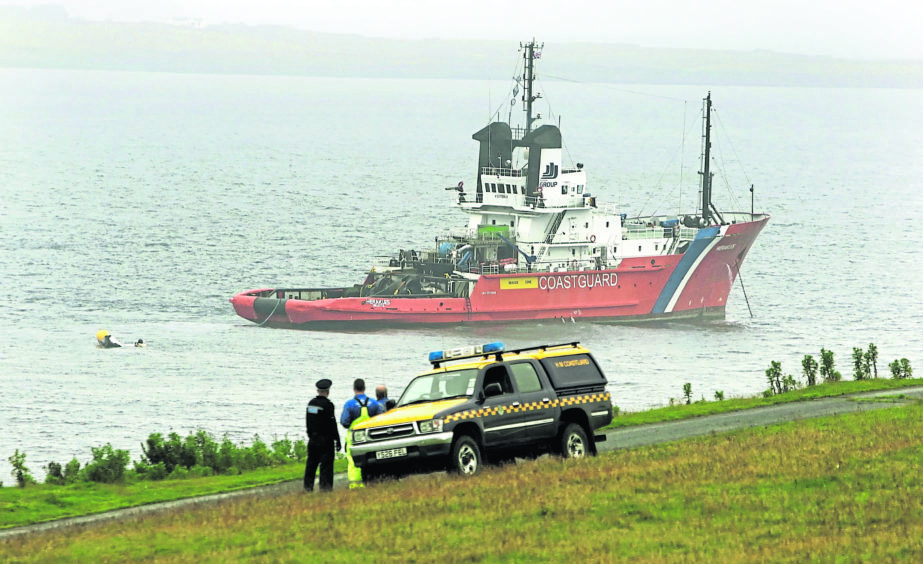
The sheriff principal leading an inquiry into the horror helicopter crash off Shetland in 2013 has questioned whether the pilot had believed he was actually landing at the time, instead of plummeting into the sea.
The fatal accident inquiry is hearing evidence into the tragic circumstances of the Super Puma L2 crash in fog two miles west of Sumburgh Airport on August 23 2013.
Four offshore workers died at the time, while a fifth committed suicide later.
An investigation by the Air Accidents Investigation Branch (AAIB) found the flight instruments were “not monitored effectively” by the pilots in the moments leading up to the tragedy.
The AAIB said a lack of monitoring meant a reduction in air speed was not noticed by the pilots and attempts to recover control were too late.
Giving evidence on day 11 of the inquiry, Captain Richard Newsom, an expert pilot witness for the Civil Aviation Authority, said the pilots should have followed a constant speed of 80 knots on their landing approach, but this dropped dangerously to 35 knots.
Sheriff Principal Derek Pyle read part of a statement from co-pilot Alan Bell, in which he said he was keeping a visual view out of the window for landing lights on a runway as they flew in fog, but was also aware in his “periphery vision” of Captain Martin Miglans also “looking out”.
He asked: “Is it not possible the pilot or co-pilot thought they were landing?”
Sheriff Principal Pyle placed the hypothesis before the inquiry that the reason the speed reduced so dramatically was before they thought they were landing, adding: “The pilot thinks when he comes out of the cloud he is seeing the runway, but sees the sea. He thinks ‘I should be seeing the land’.
“I am trying to find a reason why Captain Miglans did what he did, and it goes down to why he is not travelling at 80 knots.”
Captain Newson said he agreed with the findings of the AAIB report, although he had not considered the possibility provided by the sheriff.
Advocate Depute Martin Richardson said: “The Crown’s position is that was not the case.”
Sheriff Principal Pyle admitted he may “be going down a blind alley” but found it difficult to understand how the two pilots both failed to monitor the situation they were in.
Meanwhile, the inquiry heard there had been 115 deaths in 12 fatal accidents in the North Sea helicopter industry in the 36 years leading up to the crash.
There were a total of 72 incidents recorded as accidents which could have led to serious injury or fatality between 1976 and 2012, the inquiry was told.
Captain Newson, employed by the Civil Aviation Authority (CAA) as flight operations manager for helicopters, said safety had improved hugely since 2013 – so much so there have been no fatal crashes for seven years.
A former Royal Navy pilot with 37 years’ flying experience, he added: “The industry, the regulator, the manufacturers have made a step change in safety.”
These included training of pilots, particularly in the monitoring of flight deck instruments.
The AAIB said a lack of monitoring meant a reduction in air speed from 80knots to 35knots on the landing approach was not noticed by the pilots, and attempts to recover control were too late.
Captain Newson said safety reviews had been undertaken before the AAIB report was published in 2016, and many of the recommendations – including improvements to the industry’s standard operating procedures – had been implemented.
He added: “Fatality rates in the last five years is zero, (in fact) it is true from 2013.
“(The) accident rate has reduced by 50%.”